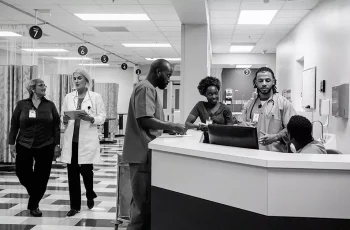Hypoglycemia, characterized by dangerously low blood sugar levels, poses a significant challenge for individuals living with diabetes. This condition can lead to severe complications, including confusion, loss of consciousness, and even seizures. Understanding hypoglycemia is essential for both those affected and their caregivers, as the implications can escalate quickly if not addressed promptly. By empowering individuals with knowledge and effective strategies, we can transform hypoglycemia from a source of fear into a manageable aspect of daily life.

The Urgency of Timely Action
When faced with hypoglycemia, immediate action is crucial. For anyone at risk, particularly diabetics and their caregivers, having a well-defined response plan can make all the difference. It is advisable to maintain a comprehensive first aid kit specifically for hypoglycemic emergencies. This kit should include:
- Blood Glucose Meter: Essential for monitoring blood sugar levels.
- Extra Test Strips: To ensure accurate readings.
- Fast-Acting Carbohydrate Sources: Items like glucose tablets, sugary drinks, or candy that can quickly elevate blood sugar levels.
- Glucagon Kit: A critical tool for severe cases where oral intake is impossible.
Moreover, keeping emergency contact information and a medical ID on hand can be invaluable during a crisis. This preparedness not only helps manage hypoglycemia effectively but also alleviates anxiety for both the individual and their caregivers.
The Rule of 15: A Simple Recovery Guide
A widely recognized strategy for managing low blood sugar is the “Rule of 15.” This guideline suggests that when symptoms of hypoglycemia occur, individuals should consume 15 grams of quick-acting carbohydrates and then check their blood sugar levels after 15 minutes. If the levels remain low, the process should be repeated. This approach empowers individuals by providing them with a clear method to manage their condition proactively, reducing panic during critical moments.
For example, quick sources of carbohydrates include:
- Glucose Tablets: Specifically designed for rapid absorption.
- Fruit Juice: A small glass can provide an immediate boost.
- Regular Soda: Not diet, as the sugar content is necessary for recovery.
Understanding how to implement the Rule of 15 effectively can make a significant difference in how individuals respond to low blood sugar episodes.
Administering Glucagon: A Lifesaving Measure
In severe cases of hypoglycemia, where the person is unable to take oral glucose due to loss of consciousness, a glucagon kit becomes essential. Glucagon is a hormone that prompts the liver to release stored glucose into the bloodstream. It is available in several forms, including premixed injections, ready-to-use nasal powder, or a mixed kit.
Administering Glucagon Safely
When administering glucagon, it is vital to position the individual on their side to reduce the risk of choking, especially if vomiting occurs. Here’s a step-by-step guide for caregivers:
- Check Responsiveness: If the person is unconscious or unable to swallow, proceed with glucagon administration.
- Prepare the Glucagon Kit: Follow the instructions specific to the type of glucagon kit you have.
- Administer the Injection: Inject glucagon into a muscle (typically the thigh or arm).
- Turn the Person on Their Side: This helps prevent choking if they vomit.
- Call Emergency Services: Always ensure that professional medical assistance is contacted immediately after administering glucagon.
Understanding how to use glucagon effectively is crucial for caregivers, as it can be a lifesaving intervention during severe hypoglycemic episodes.
The Importance of Awareness in Prevention
Education and awareness about hypoglycemia are fundamental for effective management. Individuals with diabetes must recognize the warning signs of low blood sugar and have a response plan in place. Common symptoms include:
- Shakiness
- Sweating
- Rapid heartbeat
- Dizziness
- Hunger
This knowledge not only alleviates fears but can also save lives. It is beneficial to extend education beyond the individual to family members, friends, and colleagues, creating a supportive network that can respond swiftly in emergencies.
Building a Supportive Environment
Creating a supportive environment is essential for those living with diabetes. Caregivers and loved ones should be educated about the symptoms and treatment of hypoglycemia, allowing them to assist effectively during an emergency. Regular discussions about managing diabetes and potential complications can foster understanding and empathy, making it easier for individuals to seek help when needed.
Engaging in Diabetes Education Programs
Participating in diabetes education programs can be incredibly beneficial. These programs often cover:
- Understanding blood sugar levels
- Recognizing symptoms of hypoglycemia
- Developing personalized management plans
- Learning about nutrition and exercise
By engaging in these educational opportunities, individuals can enhance their knowledge and confidence in managing their diabetes effectively.
Lifestyle Adjustments to Minimize Risk
In addition to having a response plan, lifestyle adjustments can help minimize the risk of hypoglycemia. Here are several strategies to consider:
Regular Monitoring of Blood Sugar Levels
Frequent monitoring of blood glucose levels is crucial for understanding how food, activity, and medication affect blood sugar. This practice enables individuals to make informed decisions about their diet and activity levels.
Balanced Diet
Maintaining a balanced diet that includes adequate carbohydrates is essential. Individuals should aim to include complex carbohydrates, proteins, and healthy fats in their meals to ensure stable blood sugar levels throughout the day.
Regular Physical Activity
Engaging in regular physical activity is important, but it should be balanced with food intake to prevent drops in blood sugar. Keeping snacks on hand, especially during exercise or long periods between meals, can also help maintain stable glucose levels.
Stress Management
Stress can significantly impact blood sugar levels. Incorporating stress-reducing activities such as yoga, meditation, or deep breathing exercises can help individuals maintain better control over their blood sugar.

Conclusion: Empowerment Through Knowledge
By embracing knowledge and established procedures, individuals can face the challenges posed by hypoglycemia with confidence. Proper education about the condition, combined with the right tools and a proactive approach, allows for effective management of low blood sugar episodes. Transitioning hypoglycemia from a potential crisis to a controlled situation empowers individuals to lead fulfilling lives while managing their diabetes.
In summary, understanding hypoglycemia, having a clear action plan, and fostering a supportive network are crucial components in tackling this condition. With these strategies in place, individuals can navigate the complexities of diabetes with greater assurance, transforming potential emergencies into manageable situations. By prioritizing education, preparedness, and support, we can ensure that those living with diabetes can confidently manage their health and well-being, turning hypoglycemia into a manageable part of their lives rather than a source of fear.

